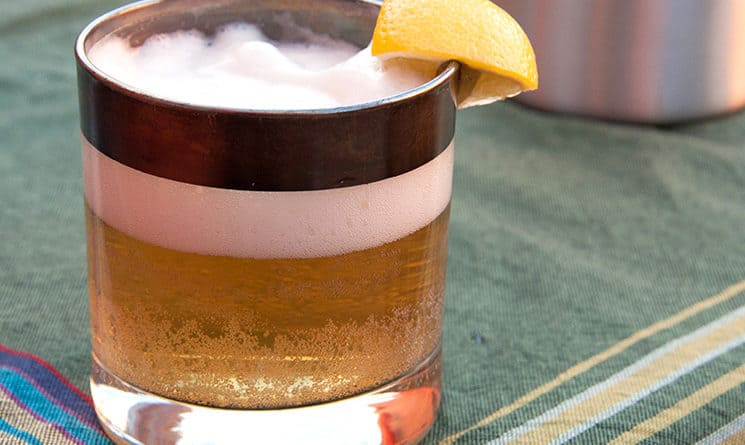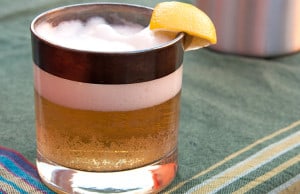Foragers think in seasons. It’s a natural habit — when your food choices are limited to what you can find and what’s currently growing, you’ve got to live in the moment.
“If you ask a forager about whatever their favorite foraged food is, it’s whatever they’re getting right now,” says Ellen Zachos, an author, teacher, and foraging expert. “We get excited about things as they come in and out of season.”
One of the things Zachos is most excited about is foraged mixology — the burgeoning art of using locally foraged foods in cocktails and other beverages. She’s written six books, including “Backyard Foraging: 65 Familiar Plants You Didn’t Know You Could Eat,” and writes about foraging at foraging.about.com. Zachos is also one of the leading experts on foraged mixology and has taught classes on the subject throughout the country. She’ll be at Blue Moon Evolution in Exeter on June 20 for a workshop on foraged mixology.
“It’s a relatively new branch of foraging,” Zachos says.
As sourcing food locally becomes the standard for many restaurants and bars, they’re turning toward foraged ingredients in order to add variety and increase offerings, according to Jenna Rozelle, a professional commercial forager who supplies food to Earth Eagle Brewings in Portsmouth along with a number of other local restaurants and bars.
According to Zachos, a New Hampshire native, one foraged cocktail ingredient that will be in season within the next week is elderflower, which can be used to make elderflower champagne. It’s not a true champagne, she says, but the plant’s natural yeast can make a carbonated beverage, and it’s also good for flavoring ice cream and custards.
“If you make a cocktail from foraged ingredients in Austin, it’s very different from the one you’d make in Portsmouth,” she says. “That lets you play round with really interesting flavors … and also lets you fool around with the idea of what a place tastes like.”
One of Zachos’ favorite ingredients is nettle, the season of which recently passed. Nettles can be used as a green, similar to spinach, and can often be used to stuff pasta or add to a casserole. They can also be used to make cordials that can be used in cocktails.
Zachos has foraged everywhere from Greece to Central Park. (“It’s surprising how much good foraging there is in an urban environment,” she says.) And, though she’s been foraging and teaching people how to forage for years, she’s still surprised at how much foraging knowledge has been lost so quickly.
“This was common knowledge two generations ago,” she says.
For those looking to start using foraged ingredients at home in cocktails or a new dish, Zachos has a few pieces of advice. First, and most importantly, never eat anything that you’re not completely sure of.
“I’m amazed at how many times I get (inquiries from readers with) photos that say, ‘What is this berry? It was delicious!’ That’s just stupid,” she says.
The second rule is to get educated from a variety of sources — talk with local foragers, read books, use online resources, and take classes. “When you start looking, there are a lot of people out there who have some information that they are willing to share,” Zachos says. “It’s a community that’s very excited about getting others interested in the subject.”
Stinging Nettle Cocktail
Recipe and photo by Ellen Zachos
Stinging nettles lose their sting after a quick blanching, and most people throw away the nettle water after disarming their nettles. But you can save the cooking water and use it to make nettle cordial, a traditional British refreshment. I often blanch several batches of nettles in a single pot of water, straining the greens and saving the water to cook another batch. I do this for several reasons: it saves water, the cooking water is already hot (so it speeds up the blanching process), and it yields an extra strong nettle tea, which makes for a lovely drink.
To make the cordial:
Combine 1 quart strong nettle tea
2 teaspoons fresh ginger (roughly chopped)
1/2 cup agave nectar or another neutral sweetener
1/4 lemon, sliced
Combine the first three ingredients in a large pot and bring them to a boil. Remove from the heat, add the lemon slices, and cover the pot. Let the potion steep for 24 hours, then strain off the solids.
You can serve this plain, over ice, or run it through your soda siphon for a carbonated version. And if you’d like to use it in an adult beverage:
Stinger in the Rye
2 ounces rye whiskey
1.5 ounces nettle cordial
.5 ounces club soda (or unflavored seltzer)
Combine the rye and nettle cordial in a shaker full of ice and shake for 30 seconds. Strain into a small cocktail glass, top with the seltzer, and garnish with lemon.
Wild Imbibe-ables takes place Saturday, June 20 at 6:30 p.m. at Blue Moon Evolution, 8 Clifford St., Exeter. Tickets are $30 and are available here.


